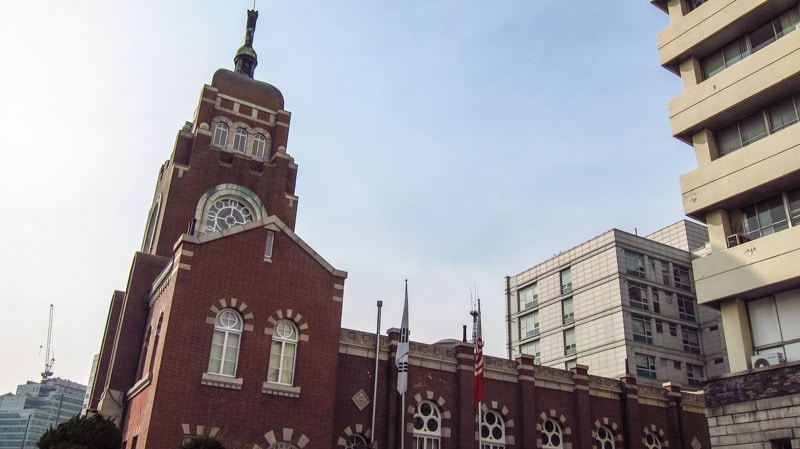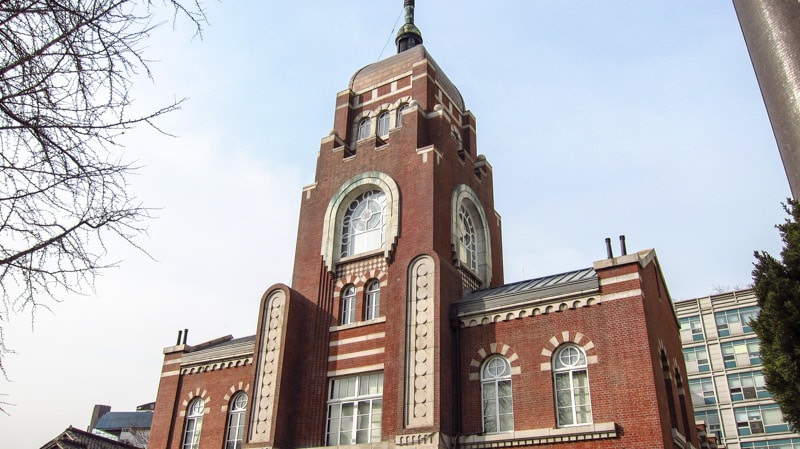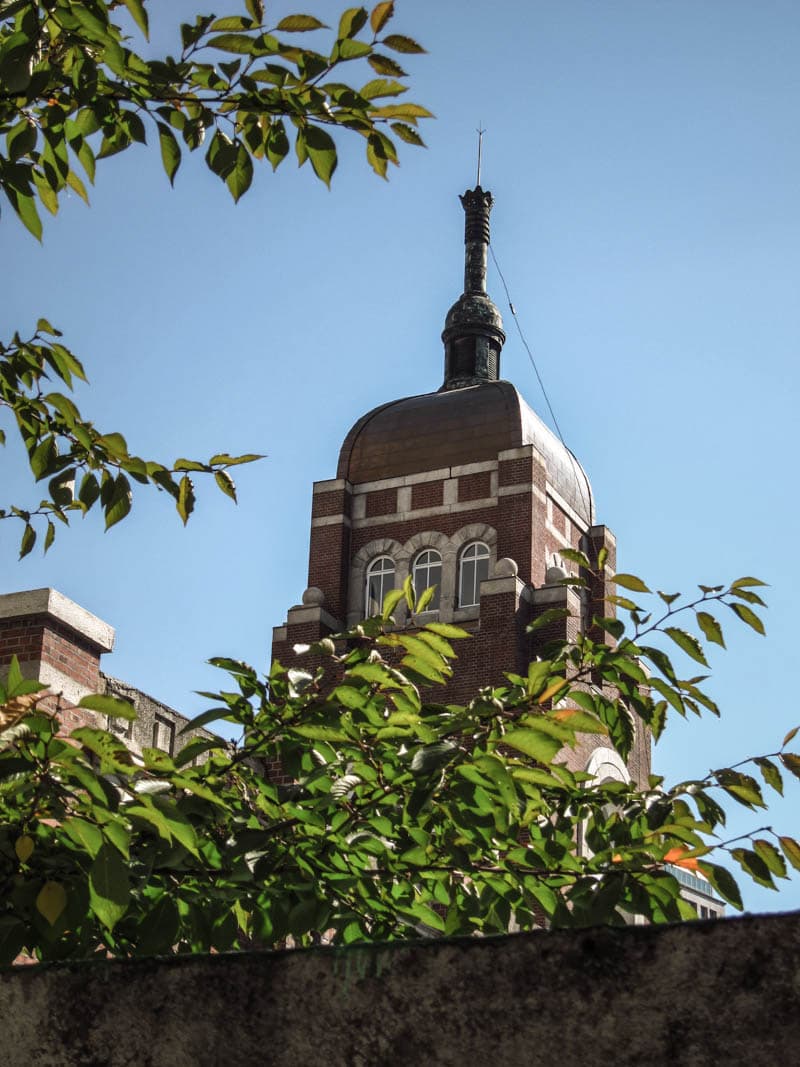
When Cheondogyo Central Temple was built between 1918 and 1921 it was used as a temple of Cheondoism, a 20th century Korean religious movement. Cheondogyo literally means “religion of the Heavenly Way.”
The roots of Cheondoism are based on the Confucian movement with an emphasis on Taoism, Buddhism, Korean nationalism, and ideas of peace, personal virtues, and morals while on earth. The religion rejects the idea of an afterlife but focuses on paradise on earth.
Cheondogyo Central Temple is the headquarters of the homegrown Korean religion of Cheondogyo. The religion became popular in the 1860s by combining elements of Buddhists, Confucians, and Christians.
The church was originally part of the Donghak, or Eastern Learning, reform that focused on the idea that all human beings were equal. This idea was a new concept at the time.

Construction on the Cheondogyo Central Temple was started in 1918 by mainly Chinese laborers. The construction of the building coincided with the March 1st Independence Movement. Construction was delayed for a year as building costs were instead spent for the movement.
At completion in 1921, the temple was considered one of the most magnificent and tallest buildings in Seoul along with Myeongdong Cathedral and Japanese General Government Building, once located near Gwanghwamun Gate.
The temple also stood as a symbol for the building up of the nation and for the people against the Japanese invasion and occupation of Korea.

The structure was built in Vienna Secession style architecture by Japanese colonial era architect Nakamura Yoshihei. The design also features German influences, thanks to Anton Feller, an assistant of Yoshihei from Germany. The style of the temple was very rare for modern Korean architecture at the time. The material used was mainly red bricks with granitic stones.
If you have time, try to check out the inside of the building. The temple features an ornate art nouveau interior with an impressive meeting hall that is held up without a single pillar. The assembly hall covers a considerable amount of space.
Office rooms can be found on the wings of the 1st and 2nd floors.
Along with Old Seoul Station, Cheondogyo Central Temple is without a doubt one of the most impressive examples of colonial architecture.
The temple is located just east of the popular and traditional neighborhood of Insadong.
Table of Contents
Cheondogyo Central Temple Hours
Daily : 9:00-18:00
Admission
FreeHow to get to Cheondogyo Central Temple
Take Subway Line 3 to Anguk Station (Exit 5).
Walk straight for 1 minute.
The temple will be on the right.
Additional Resources
Book Recommendation: Fodor’s Seoul
While The Seoul Guide provides plenty of information about traveling to Seoul, sometimes it helps to bring a book with you on your journey. Want to visit Gwangjang Market, hike Bukhansan National Park, visit an ancient palace, or sing karaoke all night long? The book I always recommend is Fodor's Seoul, which provides expert recommendations including sights to see, restaurant reviews, maps, and essential trip-planning information for everything related to Seoul.
Learn more about Fodor's Seoul
Rakuten
Save money while exploring Seoul with Rakuten's cashback program. By booking hotels through Rakuten, visitors can earn cashback rewards and enjoy significant savings. Exclusive partnerships and deals make stays in Seoul more affordable, freeing up funds for attractions, dining, and other experiences. I use Rakuten for cashback on all of my hotel stays in Seoul.
If you sign up using the link below, you will get $30 cashback after your first purchase over $30.
Klook
Klook is a reliable online platform offering discounted tickets and reservations for attractions and services in Seoul. It covers theme parks, museums, transportation, WiFi, tours, and more. Travelers can save time and money by booking through Klook's user-friendly interface, with secure transactions and helpful customer support.
If you sign up using the link below, you will get $5 off your first order.
Learn more about KlookLast Updated on Oct 21, 2023